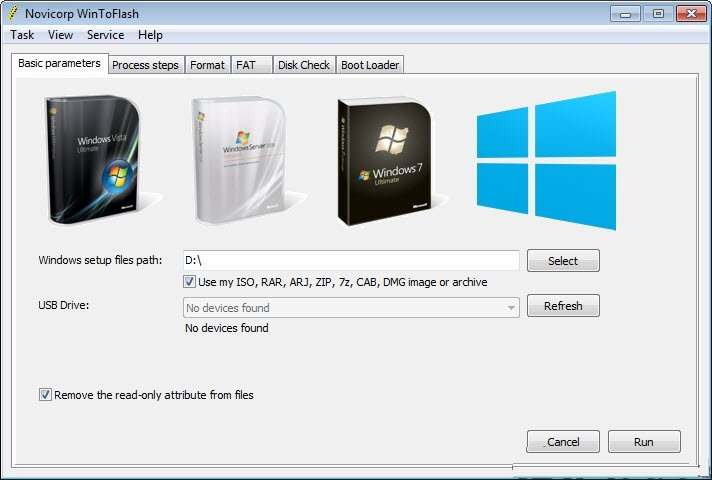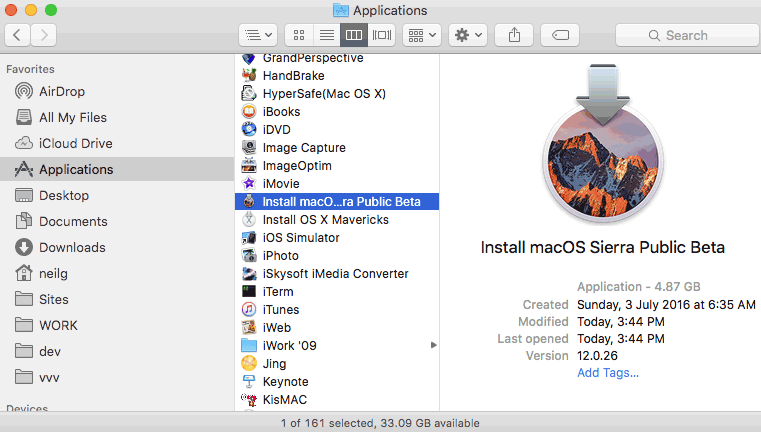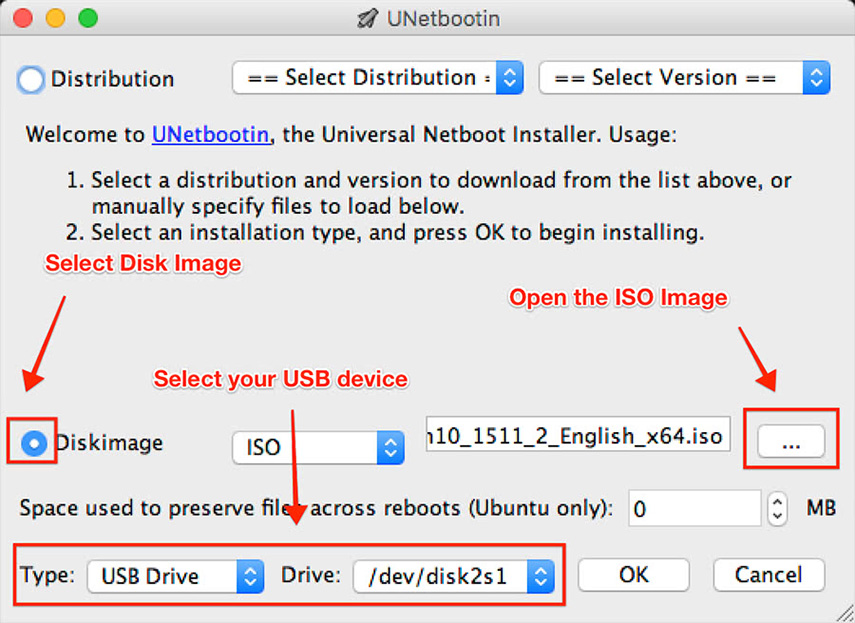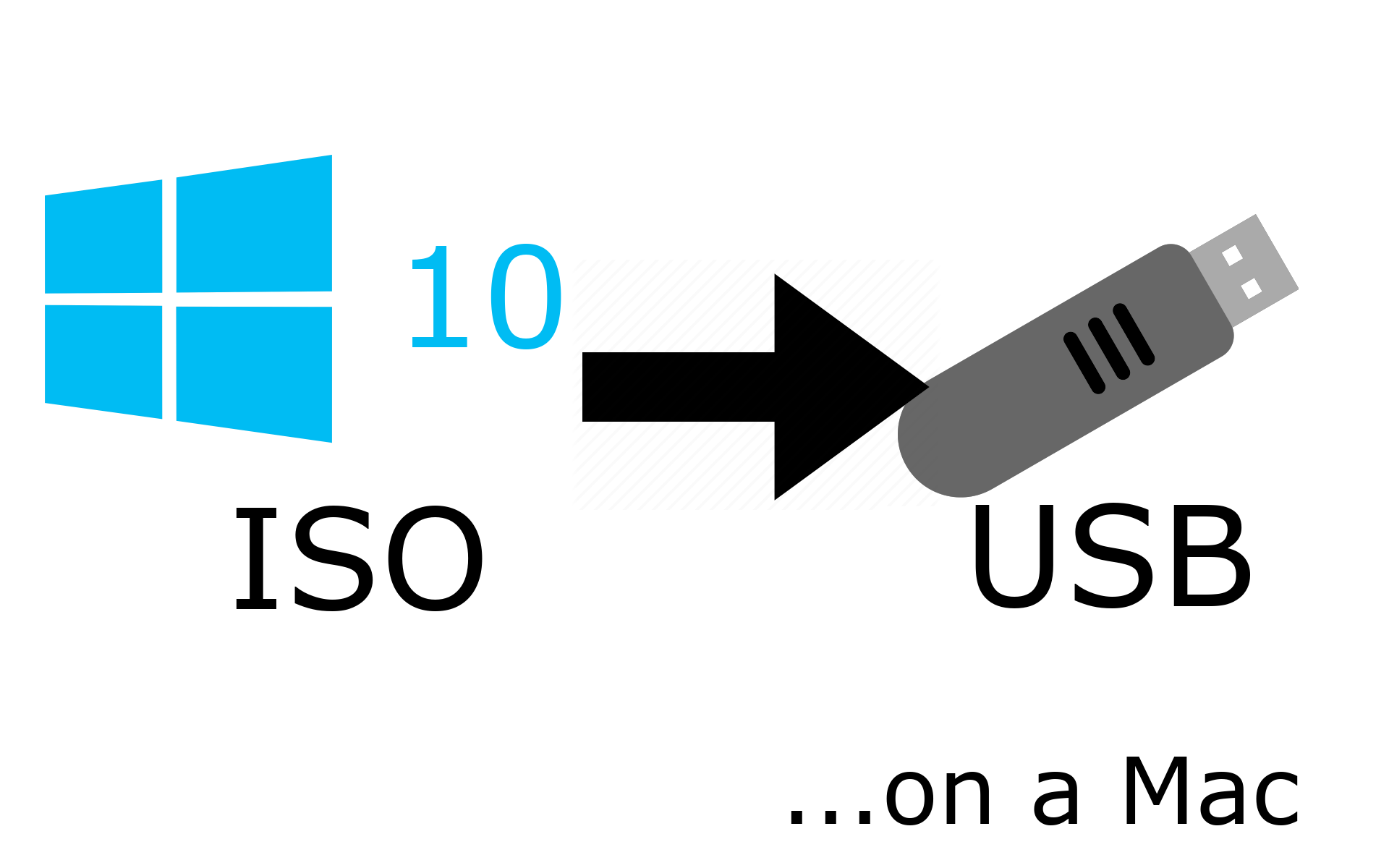To create a bootable USB drive from a DMG file on Windows, you will need to have the right utility. That's because DMG is not native on Windows. It is the Mac equivalent of an ISO file that has been in use since Apple transitioned from the IMG format with Mac OS X. A DMG file, like ISO, can be used to install macOS operating system or Mac apps. If the Mac computer was broken or crashed and couln't get into the system, but you only have access to a Windows PC, there's still a way to make a bootable macOS install USB on Windows.
This article looks at three applications that you can use to create a bootable USB drive from a DMG file in Windows. All of them have their advantages and disadvantages, which we have highlighted. You can make the best choice for you based on the information provided below. They are in no particular order of preference.
DMG Editor - Make Bootable USB from DMG File on Windows
It is not easy to find an user-friendly application when it comes to make bootable macOS Install USB. That's the reason why we spent months to develop such an app. Our latest product, DMG Editor, is a fairly robust application for creating bootable USB from a DMG file. And it works well on both Windows and Mac platforms.
Make Bootable Macos Yosemite Usb
Unlike previous versions of Mac OS X, Lion (OS X 10.7) doesn’t ship on a bootable disc—it’s available only as an installer app downloadable from the Mac App Store, and that installer doesn. A broken Mac computer with Mac OS X. A trial copy of the TransMac software. One high quality USB flash drive with 16GB of storage. A copy of Apple’s macOS (DMG file). Now that you have all the necessary ingredients, you’re ready to make a Mac OS X bootable USB using the DMG file of the operating system with the steps below. A bootable USB is super convenient to have on hand if you need to install or repair an operating system on your computer. You can easily make your own bootable USB that’s equipped with the operating system of your choosing. Whether you’re using Windows or a Mac, we’ll walk you through the process step-by-step. Select Mac OS Extended (Journaled) from Format dropdown. Type BigSur or any other name you like. Make it simple because you will use this name in the next step. Click Erase and wait until the media is erased. Step 3: Making the Bootable Media. Now open Terminal and type the following command. Make sure you don’t leave any spaces. This is how simple it is to make bootable Windows 10 USB Mac with the help of this tool. Method 2: Use UNetbootin to Install USB Driver on Mac UNetbootin is a Windows 10 USB tool Mac that is completely free to use and can be used in a scenario wherein you have to make bootable USB Windows 10 on Mac system.

It is packed with modern UI and the steps are very step to follow. After several mouse clicks and wait a couple of minutes, a bootable macOS USB is ready for OS installation or system repair. You won't find any other applications on Windows that is better than UUByte DMG Editor!
Step 1: Download UUByte DMG Editor setup.exe from this website and follow the prompt to install the software on a Windows PC. Currently, it works well on Windows 10, Windows 8 and Windows 7.
Step 2: After installation, UUByte DMG Editor will be opened automatically. And you will see three options on the main screen. At this time, click 'Burn' tab And you will be lead to a new window.
Step 3: Insert an USB drive to Windows PC and the name will show up at the right side of USB icon. If the drive name was wrong, you can click 'Change' button to pick up the right device. Next, click 'Browse' button to add the .dmg file into the program.
Step 4: When the dmg file is loaded from local hard drive, click 'Burn' button to start burning dmg to USB drive. This process will be finished in less than 10 minutes and you have to wait before you can do anything with the device.
You will be notified when the burning task is completed. Now follow the link listed on the screen to start installing macOS from USB drive
.Convert DMG to ISO and Create macOS Boot USB from Windows
Since ISO is a better format for Windows, you can also convert the DMG to the ISO format and then use the ISO disk image to create the bootable USB. Please note that you can't boot your Mac from bootable USB made from an ISO file, which means you'll have to convert it back to DMG prior to that. Still, it's an effective way to create bootable media for a Mac computer. Here's how it works:
Step 1: Once you have the macOS install DMG file on a Windows PC, click on Windows + R to open the run dialog box, and type in CMD, then hit Enter. When the Command Prompt opens up, use the following command to convert the file to ISO:
hdiutil convert /path/sourceimagefile.dmg -format UDTO -o /path/targetmage.iso
Step 2: Download and install UUByte ISO Editor on your PC, insert the USB drive and launch the application.
Step 3: Click Burn button on the main screen and point to the converted ISO file. The drive will be automatically detected and click on Burn icon to burn the ISO to the USB drive.
Once the ISO is burned to the file, you can insert it into a Mac and convert it back into the DMG format. Since you're converting the file twice, there's a chance that the file could get corrupted in the process. If that happens repeatedly, then try this next method.
PowerISO: Make Bootable Mac Install USB on Windows 10/8/7
This Windows utility allows you do create bootable USB from DMG on a PC. You can also edit the DMG or extract the contents, and there's also an option to copy it to a disk. For this particular exercise, we'll show you how to use PowerISO to create a bootable USB drive on Windows without having to convert the disk image into another format like ISO.
Step 1: Download and install the application on your PC.
Step 2: Insert your USB drive and launch PowerISO.
Step 3: In the Tools menu, select 'Create Bootable USB Drive… '. You will need to give admin privileges to the software. Alternatively, you can run the program as admin when you launch it.
Step 4: Select the USB drive in the section called Destination USB Drive.
Step 5: Leave all other default as they are and click on 'Start' to burn DMG to the USB drive.
You should be able to see the progress, and a new popup will appear when the bootable media is ready. You can now eject the media and use it to run the DMG on a Mac computer.
Conclusion:
All of these methods are workable, so select the right one for you based on your level of knowledge and your preference.
Apple has just released the final version of macOS Big Sur to the public. You can start upgrading your compatible Mac devices by downloading Big Sur from the App Store or Settings > Software Updates. But if you prefer to completely wipe out your Mac and do a fresh install of macOS Big Sur, you will need a bootable media.
I perform a fresh install every time Apple releases a major macOS version – which usually happens once a year. This time too, I will update my Macbook Air by performing a fresh install. And to do that, I will make a bootable SD card. You can also use a USB stick aka pen drive aka flash drive and perform a fresh install.
In this quick tutorial, I will share how I make a bootable macOS memory card or USB stick, wipe my Mac, and perform a fresh install. You will need a stable internet connection and a storage media with minimum 16GB space. Before you begin, make sure you have taken backup of your Mac.
Step 1: Download macOS Big Sur
Open App Store and search for macOS Big Sur. Click Get and the Software Update window will open. Click upgrade now and it will start downloading the macOS update. If you don’t see macOS Big Sur in App Store, follow this link and choose open link in App Store.
The installer is 12GB so be patience.

Once it finished downloading, the macOS installer is placed under Applications and will run automatically. Close the setup window.
Step 2: Preparing the Storage Media
Insert the storage media you would like to use. I use a 64GB micro SD card with my MacBook Air. You can use a USB-C to USB adapter for Mac models without USB A ports and memory card slot.
Open Disk Utility.

Select the storage medium you just connected from the list on left and click Erase. Select Mac OS Extended (Journaled) from Format dropdown. Type BigSur or any other name you like. Make it simple because you will use this name in the next step.
Click Erase and wait until the media is erased.
Step 3: Making the Bootable Media
Now open Terminal and type the following command. Make sure you don’t leave any spaces. Replace BigSur with whatever name you chose in Step 2.
Press enter.
Enter your password, type Y and press enter again. The process takes roughly 20 minutes. After it’s finished, you will notice that the name of your USB stick/SD card has been changed to Install macOS Big Sur.

Step 4: Installing macOS Big Sur from Bootable Media
Right. Now you have a Big Sur bootable media. It’s time to start the installation process.
Restart your Mac. When it’s booting up (right after the chime sound), press and hold Option key until you see a screen with an option to select the startup disk.
Select Install macOS Big Sur and click continue. Let the installer load.
Now you will see the macOS Recovery screen which will ask you to select a user account which you know the password of. Choose your administrator account and enter password. Note that this is the user on your current macOS setup.
Click Disk Utility and continue. Select the volume where macOS is currently installed on your Mac. Click Erase. Leave all options as default. Click Erase again.
Make Bootable Macos Big Sur
After the process finishes, close Disk Utility and you will return to the recovery screen. Choose ‘Install macOS’ this time and click continue.
The macOS installation process will start and your Mac will reboot a few times.
Once finished, you should see the macOS setup screen. After you are done with onboarding, you will see the desktop and are all set to start using macOS Big Sur.
The same bootable media you just made can be used to install macOS Big Sur on all your (compatible) Macs. This approach helps save bandwidth if you have more than one devices while also letting you erase all data and perform a clean install. It will also come in handy as a recovery media if your Mac software misbehaves in future.
That’s all, folks. This was a tutorial on making a bootable macOS Big Sur installation media. I hope you found it useful and I’d like to thank you for reading.
Make Bootable Mac Usb On Windows
Support Me: If this article/tutorial helped you today, please consider supporting me and help me run techstuffer.com.
